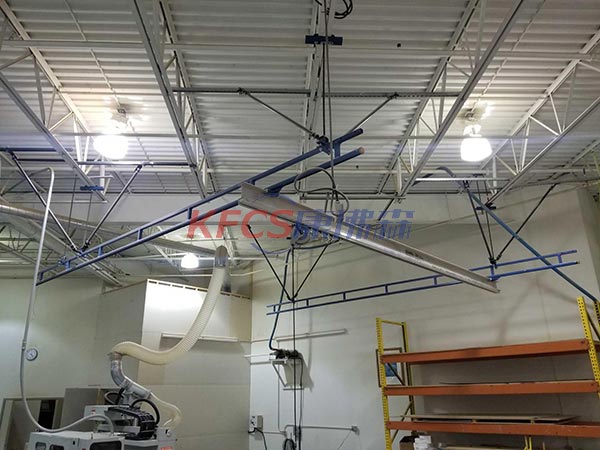Installation introduction of KBK crane
KBK track crane, suspension device, walking trolley and some functional components together form the KBK system. This product is very attractive to the domestic material industry. The birth of KBK track mainly solves small-weight, high-frequency material handling, and the lifting capacity can reach 2 tons. In order to let everyone know more about KBK track, let's briefly introduce how it should be installed.
Generally speaking, there are two types of beams for KBK track installation: steel structure beams and concrete precast beams. The latter needs to leave embedded holes so that bolts can be worn during installation, or bolts can be worn. The installation methods are mainly plate fixing method, hook screw fixing, welding and bolt joint fixing, etc. If you use the first method, you must have enough rigidity, and you can make a single hole or a double hole according to the force of each pressure plate.
KBK rail suspension is also an important standard component, which is generally located in the upper suspension beam or the rail suspension frame, and can be installed with two ball-stranded long nuts. It should be noted that all bolts need to be tightened with the specified torque when connecting. Only in this way can the light rail be suspended.
After the hanger is installed, it is necessary to connect the track. You can use a hexagon socket wrench with a universal joint to connect the bolts. The connection should ensure that the bolts are evenly tightened according to the specified torque. If the two ends of the bolt joints are not tightened The same tightness will cause the track to bend, and when several tracks are suspended, they need to be in the same horizontal plane, and if they are in a straight line. Even if there is an error, the horizontal height cannot exceed 10mm.
Next, it is necessary to install the running trolley, cable trolley and built-in buffer into the track. In order to install successfully, the top of the track needs to be drilled, and the end of the track is closed with the end cover of the buffer, and the bolts on the end cover are tightened according to the specified torque to ensure the safe operation of the trolley.

